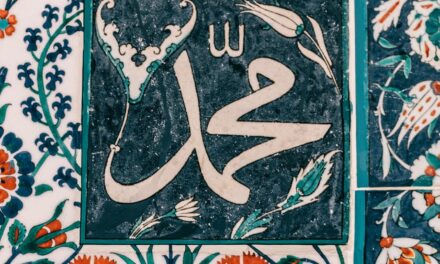Usool at-Tafseer (lit. The Fundamental Principles of Qur’aanic Interpretation), essentially refers to the branches of knowledge which are necessary to provide an accurate interpretation of the Qur’aanic texts, such as Arabic grammar and syntax, Arabic literature and Qur’aanic sciences (‘uloom al-Qur’aan).
Familiarity with modern fields of learning, like the pure sciences and social sciences, is also necessary for a commentator in this era to make the Qur’aanic explanations relevant to modern human society. Usool at-Tafseer addresses the actual step-by-step methodology of interpreting the Qur’aan to ensure that interpretations are not merely the result of human whims and fancies. These subjects were traditionally mentioned in the books of usool al-fiqh (The Fundamental Principles of Islaamic Law) and the introductions to the classical books of Tafseer.
Among the most well known early works dedicated to the subject of Usool at-Tafseer is a treatise called Muqaddimah fee Usool at-Tafseer, done by the outstanding scholar of the 13th century CE, Ibn Taymeeyah.Of the latter day works, that of the Indian scholar, ‘Abdul-Hameed al-Faraahee, is perhaps the most notable. He entitled his work, at-Takmeel fee Usool at-Ta’weel.
The more commonly used term, ‘Uloom al-Qur’aan, refers to all the fields of knowledge which serve to elucidate the Qur’aan or which are derived from it. Included among them are knowledge of tafseer (exegesis), qiraa’aat (recitations), ar-rasmul-‘Uthmaanee (the ‘Uthmaanic script), i‘jaaz al-Qur’aan (miraculous aspects of the Qur’aan), asbaab an-nuzool (reasons for revelation), an-naasikh wal-mansookh (abrogating and abrogated verses), i‘raab al-Qur’aan (Qur’aanic grammar), ghareeb al-Qur’aan (unusual Qur’aanic terms), religious rulings, and Arabic language and literature.
During the era of book compilation, many books were written in the various areas of ‘uloom al-Qur’aan. Concern was first focused on the field of tafseer, since all the various Qur’aanic sciences are utilized in it. Among the early writers of the 8th century CE were Shu‘bah ibn al-Hajjaaj, Sufyaan ibn ‘Uyaynah and It was translated by Dr. M. Abdul Haq Ansari for Imaam Ibn Sa‘ood Islamic University in Riyadh and later reprinted in England by Al-Hidaayah Press under the title, An Introduction to the Principles of Tafseer.
As for the other areas of ‘uloom al-Qur’aan, among the leading 9th century writers were ‘Alee ibn al-Madeenee (Imaam al-Bukhaaree’s teacher), who wrote on Asbaab an-Nuzool, and Aboo ‘Ubayd al-Qaasim ibn Salaam, who wrote on abrogation. The leading scholar of the 10th century to write on the unusual constructions of the Qur’aan was Aboo Bakr as-Sijistaanee, while the 11th century scholar, ‘Alee ibn Sa‘eed al-Hoofee, produced a work on its grammatical constructions in general. In the 12th century, the leading scholar to write on Mubhamaat al-Qur’aan (Qur’aanic Ambiguities) was Abul-Qaasim ‘Abdur- Rahmaan as-Sabeelee. He was followed by Ibn ‘Abdis-Salaam, who wrote on Qur’aanic metaphor (majaaz al-Qur’aan), and ‘Alamud-Deen as-Sakhaawee, who wrote on the recitations in the 13th century.
The scholars who wrote during this period sought to comprehensively cover the topics they focused on. Consequently, those who wrote on ghareeb al- Qur’aan, for example, would mention every single word in the Qur’aan which was strange or of ambiguous meaning; and those who compiled works on metaphors would investigate every type of word or phrase in the Qur’aan which had allegorical meanings, and so on in the various branches of Qur’aanic fields of learning.
The vastness of the works made it impossible for any single individual to master all fields, even if he spent his whole life and utilized all his energy. As a result, later scholars longed for the evolution of a new science which would act like an index or directory for all these fields. This became the field officially known as ‘uloom al-Qur’aan. Although there is no record of any scholars writing or attempting to write a compilation of this type before the 10th century, it was collected in the intellects of the leading early scholars.
The biography of Imaam ash-Shaafi‘ee (d. 820 CE) contains an incident which amply illustrates this point. When he was accused of being the leader of the ‘Alawee sect in Yemen and was brought in shackles and chains before Caliph Haroon ar-Rasheed in Baghdaad, the Caliph asked him about his knowledge of Allaah’s scripture. Imaam ash-Shaafi‘ee replied, “About which of Allaah’s scriptures do you enquire, O Ameerul-Mu’mineen? For Allaah has revealed many scriptures.” Ar-Rasheed replied, “Excellent answer. However, I am asking about the Book of Allaah which was revealed to my cousin Muhammad (r).” Imaam ash-Shaafi‘ee said, “The fields of knowledge concerning the Qur’aan (‘uloom al- Qur’aan) are many. Are you asking about the muhkam and the mutashaabih, or taqdeem (advancement) and ta’kheer (delay), or naasikh and mansookh, or about… or about…?”
So ar-Rasheed raised questions about a number of different fields of Qur’aanic knowledge, and Imaam ash-Shaafi‘ee’s answers for each question astounded the Caliph and those present.The first specialized work on ‘uloom al-Qur’aan recorded in the index of authors, Fihrist Ibn Nadeem, is the 10th century work, al-Haadee fee ‘Uloom al- Qur’aan, by Aboo Bakr Muhammad ibn Khalaf (d. 309 AH).
The next oldest is al-Burhaan fee Tafseer al-Qur’aan by ‘Alee ibn Ibraaheem ibn Sa‘eed, better known as al- Hoofee (d. 330 AH). The text is not a systematic compilation of the sciences of ‘uloom al-Qur’aan, but follows the tafseer format in which the author introduces the various branches of ‘uloom al-Qur’aan where relevant.In the 12th century, Ibn al-Jawzee (d. 597 AH) wrote two books in the field called Funoon al-Afnaan fee ‘Uyoon‘Uloom al-Qur’aan and al-Mujtabaa fee ‘Uloom Tata‘allaq bil-Qur’aan. The first has been printed. The second remains in manuscript at Daar al-Kutub al-Misreeyah in Egypt.
The 13th century witnessed two more works, Jamaal al-Qurraa’ by ‘Alamud-Deen as-Sakhaawee (d. 641 AH), and al-Murshid al-Wajeez fee maa Yata‘allaq bil-Qur’aan al-‘Azeez,by Aboo Shaamah ‘Abdur-Rahmaan ibn Ismaa‘eel al-Maqdasee (d. 775 AH). Badrud-Deen az-Zarkashee (d. 794 AH) wrote his classic, entitled al-Burhaan fee ‘Uloom al-Qur’aan, in the 14th century. It has been published. He was followed in the 15th century by Muhammad ibn Sulaymaan al-Kaafeejee (d. 873 AH) and Jalaalud-Deen al-Balqeenee, who identified fifty different types of Qur’aanic sciences in his book, Mawaaqi‘ al-‘Uloom min Mawaaqi‘ an-Nujoom.
In the same century, Jalaalud-Deen as-Suyootee (d. 911 AH) wrote two books in the field of ‘uloom al-Qur’aan. He entitled the first, finished in 872 AH, at-Tahbeer fee ‘Uloom at-Tafseer. It consists of one slim volume, but touches on 102 different fields of Qur’aanic sciences. He later combined and condensed the fields to 80, which he then elaborated upon in his work, Kitaab al-Itqaan fee ‘Uloom al- Qur’aan. The latter text became the standard source book in the study of ‘uloom al-Qur’aan for later generations of scholars.
For the next three centuries the field of ‘uloom al-Qur’aan saw little development. However in the 20th century, a new flurry of writing began with Shaykh Taahir al-Jazaa’iree’s 300-page work entitled, at-Tibyaan fee ‘Uloom al- Qur’aan. In the mid twentieth century, a number of professors at al-Azhar University wrote concise texts on the subject of ‘uloom al-Qur’aan for their respective colleges. Some of these were later published.
Among the more notable is Minhaaj al-Furqaan fee ‘Uloom al-Qur’aan written for students in the College of Da‘wah wal-Irshaad by Shaykh Muhammad ‘Alee Salaamah.Manaahil al-‘Irfaan fee ‘Uloom al-Qur’aan, a two volume work of over 1000 pages was written by Shaykh Muhammad ‘Abdul-‘Atheem az-Zarqaanee, former lecturer of ‘uloom al-Qur’aan and ‘uloom al-Hadeeth in the College of Islaamic Disciplines (usool ad-Deen).
In the latter part of the 20th century, a number of excellent works have been written in the field by university professors like Mabaahith fee ‘Uloom al-Qur’aan by Subhee as-Saalih, Mabaahith fee ‘Uloom al-Qur’aan by Mannaa‘ al-Qattaan, Madkhal ilaa al-Qur’aan al-Kareem by Muhammad ‘Abdullaah Daraaz, al-Madkhal li Diraasah al-Qur’aan, by Muhammad Aboo Shahbah, and Lamahaat fee ‘Uloom al-Qur’aan by Dr. Muhammad ibn Lutfee as-Sabbaagh.

![What is Usool at Tafseer? [Principles of Tafseer]](https://sunnahinsights.com/wp-content/uploads/2021/05/pexels-photo-5531014-1280x640.jpeg)





Recent Comments